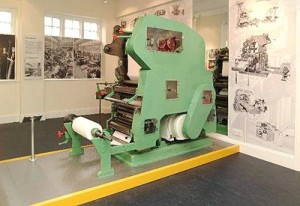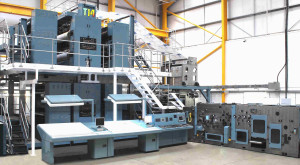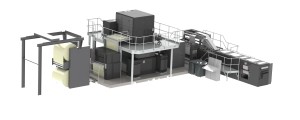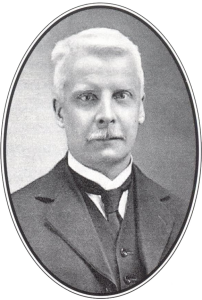Timsons, Ltd. was formed in 1896 by Mr. Arthur Richardson Timson, who initially repaired shoe machinery in the cellar of his parents’ house in Kettering, England. Soon
afterwards, his family moved and the business continued in a workshop in the new home’s garden.
After repairing shoe machinery, Arthur Timson started to manufacture to his own designs. He also began to sell, repair and produce bicycles – which had become very popular in the 1890s. This led to the development of the “ketterina,” a single-speed motorcycle with a small De Dion engine. By 1907 the Company was also moving into the printing machinery market.
Ernest, the only son of Arthur Timson, joined him in 1920 and together they ran the Company until Arthur died in 1954. During this period, Timsons established its reputation as a leading manufacturer of web fed rotary presses, printing letterpress and gravure.
 The development of the ‘Wun-Up’ business forms press in 1949 was certainly one of the most important milestones in Timsons’ history.
The development of the ‘Wun-Up’ business forms press in 1949 was certainly one of the most important milestones in Timsons’ history.
This utilized the benefits of the flexibility of the new rubber letterpress plates to make a small size versatile web press with exchangeable print cylinders, covering a wide range of sizes. With the coming of computers, this press was developed to produce zig-zag folded packs of stationery complete with perforation and sprocket holes.
1929 marked the production of the first Timson web fed rotary press with in-line folding. The low volume production of presses for books continued through to the 1960s. However, it was in the 1970s that the Timson ‘T32′ book press was introduced and became Timsons’ flagship product.
Development of book presses continued with the launch of the ‘T48A’ at Print 97 in Chicago. This press featured a vertical web line and Timsons Simultaneous Plate Changing System (SPCS), designed to help the printer of a single color book produce short run profitability. The T48A evolved into the Zero Make Ready (ZMR) which changes forms on single color production without stopping. The ZMR revolutionized book printing, making possible the continuous running of the press, changing from one form to another with as little waste as 30 signatures or providing the ability to print two color work.
The cutting edge of the ZMR later progressed to the ZMR2 providing even more flexibility and printing power. The ZMR2 double web, “Zero Make-Ready” book press combines all the benefits associated with our single web ZMR press. However, this design provides the added benefit of higher page throughput at a higher press speed for the longer run book printer. The ZMR2 press can be run as a single web, producing exceptional two-color, high-quality work at speeds never before realized.
The Four Color T14 was the next generation of the proven concept of the original T48A and ZMR. This press enables the use of the Zero Make Ready on one and two color books. While two units print, the pressman changes plates on the others. The third and fourth units are accelerated and synchronized to the web speed, and as soon as the last signature is produced these units start to print. Additionally, there is the option to run in four color mode.
Timsons ability to change with the times and remain the primary supplier of book printing equipment was further enhanced with the development of the T-Print line.
 T-Print in combination with T-Fold provides our customers with the ONLY industrial grade printing and finishing line capable of producing books from wide webs at offset speeds.
T-Print in combination with T-Fold provides our customers with the ONLY industrial grade printing and finishing line capable of producing books from wide webs at offset speeds.
T-Fold can also be integrated with alternate digital print engines with current installations on both HP & Kodak equipment.
By providing our customers with the latest technologies optimized specifically for book production Timsons remains the primary supplier of book printing equipment.
Despite the evolution of press technologies Timsons prides itself on the basic principles of its founder.
“I will give you all the assistance, that you might in time take a leading position, but the ladder wants climbing a rung at a time, but this will only come by experience and time.”
—
Arthur Richardson Timson


